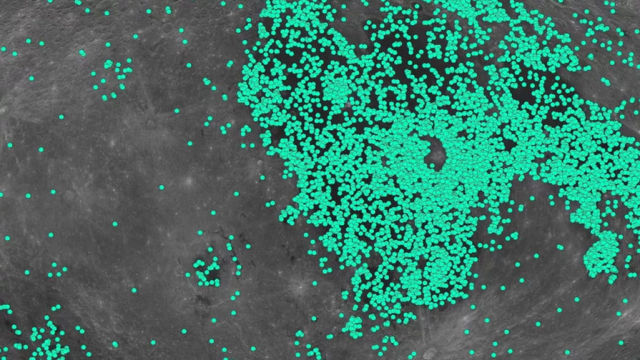Chinese scientists made a map of lunar craters, discovered the AI
Chinese scientists have discovered more than 100 thousand new craters on the moon. To do this, they were helped by artificial intelligence, which has learned to search for almost invisible objects better than humans.
There are many more craters on the moon than previously thought. In total, in the course of one study, the number of discovered craters was increased by an order of magnitude, revealing 109 thousand previously unknown ones.
A study of scientists, the details of which were reviewed by "Gazeta.Ru", published in the journal Nature Communications
"This is the largest database of lunar craters made by automatic selection, for low and middle latitudes," explained study author Chen Yang, a Professor in the faculty of Earth Sciences at Jilin University. Impact craters formed when meteorites collide are known to cover most of the lunar surface. According to the scientist, these craters are perceived by researchers as "fossils" that carry the history of the formation of the Solar system.
"Impact craters are the most distinctive features of the lunar surface. This is in stark contrast to Earth, whose history is very difficult to trace from the impact of asteroid and comet craters over the past 4 billion years, " Chen explained. "The earth and Moon have been bombarded the same way in the past, but large lunar craters have experienced less destruction in billions of years. In this way, lunar impact craters can store the history of Earth's evolution."
The moon has virtually no water, no atmosphere, and no tectonic activity - the three factors that determine the erosion of the earth's surface.
Many of the craters vary greatly in size. In addition, since they appeared in different historical epochs, many literally overlap each other, which makes identifying each of them extremely difficult and time-consuming. In addition, the definition of craters involving humans suffers from subjectivity, given the inconsistencies in different existing crater databases. Yang and his colleagues solved the problem using machine learning. They trained deep neural networks to operate with data containing thousands of previously discovered lunar craters, and created an algorithm to identify them.
The algorithm was then applied to lunar surface data collected by two Chinese orbital missions, Chang'e-1 and Chang'e-2, launched in 2007 and 2010, resulting in a 109956 increase in the number of known craters.
Most of them are small or medium-sized craters, although by terrestrial standards they are quite large - from 1 to 100 kilometers.
In addition, based on the diameter, depth and shape features, the algorithm was able to calculate the age of almost 19 thousand craters and assign them to a specific geological period. These craters are distributed over all five known geological periods of the moon, the oldest of them 4 billion years ago.
Scientists intend to improve the proven algorithm for detecting craters by practicing it on images obtained by the recently launched Chang'e-2 mission, which delivered more than 1.7 kilograms of lunar rock to Earth.
In addition, they are going to use machine learning to open craters on other bodies of the Solar system, for example on Mars. "Such forecasts will take only minutes compared to the hours of time spent on post-processing using standard computer equipment," the authors explain.
Pavel Kotlyar

